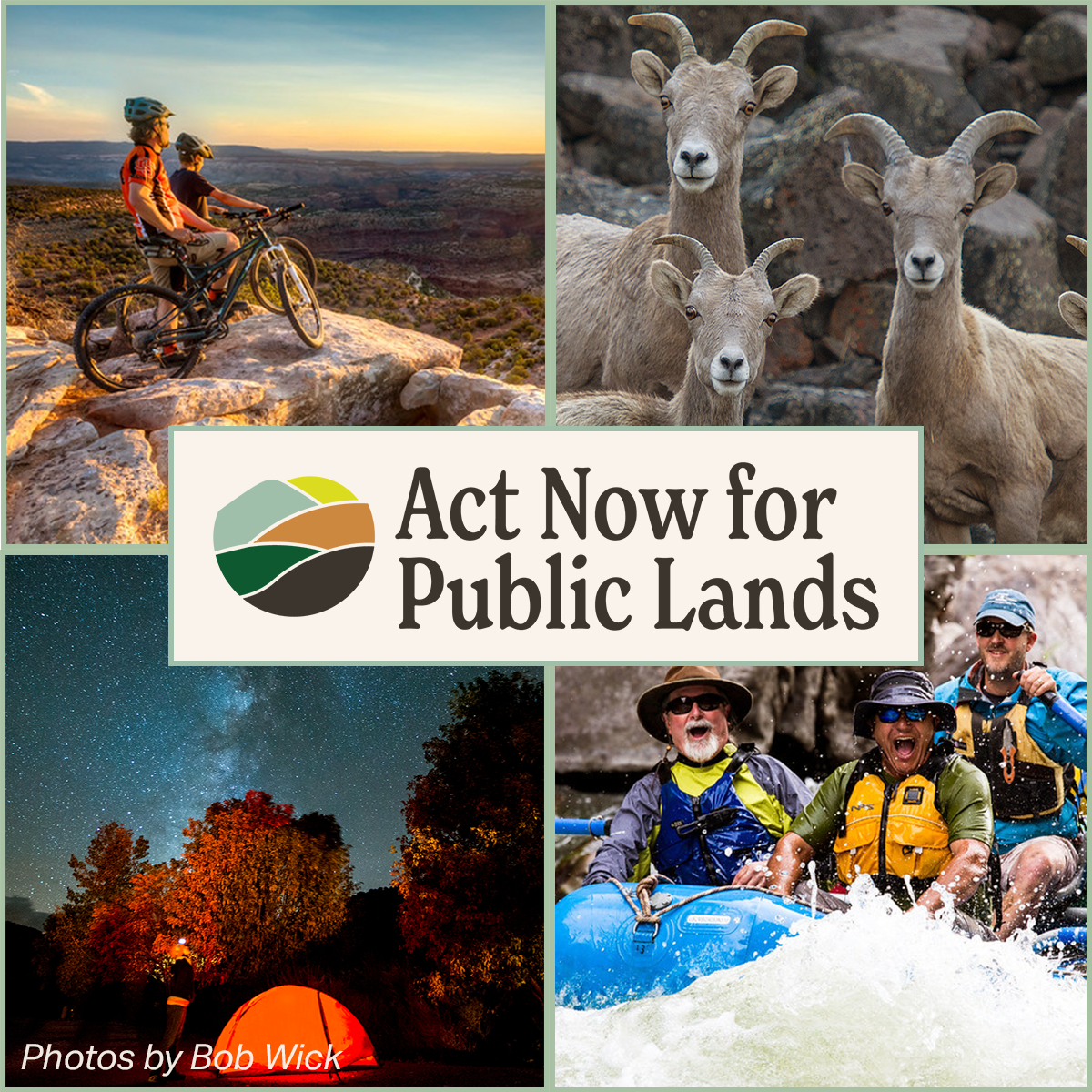
The Bureau of Land Management (BLM), the largest steward of public land, has launched a 75-day comment period to gather feedback about important ways it should balance its mission to focus on cultural lands protection, conservation, recreation, wildlife, and climate impacts for the lands and waters that support Western communities.
For nearly 40 years, the agency has largely focused on resource extraction and other multiple uses, but neglected conservation, recreation, wildlife, fragile watersheds, and cultural resource protection in partnership with tribes who have stewarded these lands for centuries. This rulemaking gives the BLM an opportunity to rebalance its priorities and develop an inclusive conservation approach that includes co-stewardship and co-management with Tribal nations who have cared for these lands and waters since time immemorial.
This is an opportunity for your voice to be heard. It’s time to tell the Biden administration that we want public lands to be managed to protect wildlife, watersheds, cultural resources, and to promote robust and healthy communities in the West.
What is the Public Lands Rule?
The BLM Public Lands Rule puts conservation on equal footing with other uses.
- The proposed rule would change future BLM planning and management. The BLM will have to consider and manage for resilient ecosystems, which includes:
- protecting intact landscapes, and;
- achieving land health by applying land health standards.
- The proposed rule also identifies tools to advance conservation management, including: Areas of Critical Environmental Concern, mitigation, restoration and conservation leasing.
What are the contents of the Rule?
Managing Public Lands for ECOSYSTEM RESILIENCE: In general, BLM relies on the presence of healthy landscapes and resilient ecosystems to fulfill their “multiple use and sustained yield” mission. In order to ensure the BLM has healthy landscapes and resilient ecosystem in the future, they must promote the use of conservation in management decisions.
- BLM has identified several ways in which to promote conservation. Mainly through the protection of intact landscapes and by applying land health standards to decisionmaking.
Protection of Intact Landscapes
- When BLM revises a Resource Management Plan they must identify intact landscapes on public lands that will be protected and determine which, if any, tracts of public land will be put to a conservation use.
- BLM will have to track impacts to intact landscapes which will be stored in a national tracking system.
Management for Land Health
- BLM must consider land health standards in decision making regardless of program area.
- The BLM will maintain an inventory of public lands based on land health fundamentals. Not less than every 5 years BLM must review land health standards and guidelines for all lands and program areas.
What are the tools to advance conservation management?
- Areas of Critical Environmental Concern (ACECs): The proposed rule makes ACECs the principal designation for protecting important natural, cultural, and scenic resources.
- BLM must identify lands for ACEC designation as part of RMP planning, revision or amendment. Planning documents must include at least one alternative that analyzes in detail all proposed ACECs. The rule defines criteria for ACEC designation.
- Groups may nominate ACEC designation outside the planning process. Interim management may be implemented to protect values until the next planning process.
- To remove an ACEC, the BLM must find the ACEC is no longer warranted.
- Restoration: In order to achieve its mission, BLM must emphasize restoration on public lands.
- BLM must include a restoration plan in any RMP adopted or revised. Each restoration plan must include goals, objectives, and management actions.
- Not less than every five years, BLM must identify landscapes for restoration.
- Mitigation: BLM should apply the mitigation hierarchy to avoid, minimize and compensate for adverse impacts to public lands. To the maximum extent possible, the BLM must require mitigation to address adverse impacts to important, scarce, or sensitive resources.
- Conservation leasing: In general, conservation leases may be authorized for restoration or mitigation.
- The BLM may issue conservation leases to protect, manage, or restore natural environments, cultural or historic resources, and ecological communities, including species and their habitats.
- The BLM can not authorize any other uses of the leased lands that are inconsistent with the authorized conservation use. (subject to valid existing rights)
BLM lands are among the nation’s most iconic open areas of the West that drive tourism, offer refuge for wildlife, provide access to nature, and safeguard innumerable stories of human experiences on the land. Now is the time to save these critical places that are the backbone of a vibrant future.
